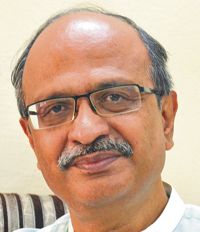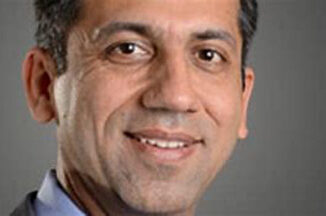
In India, the rollout of the nasal vaccine will be keenly observed. It has been given ‘emergency use’ approval and included as an additional option for a booster dose. The rollout is expected to generate the much-needed efficacy data of the new vaccine. Another Covid-19 vaccine to watch during 2023 will be the heat-tolerant candidate.
“Among other science and technology developments that will be keenly watched during the next 12 months are the rollout of the ‘digital Rupee’ or the Central Bank Digital Currency, field trials of genetically modified mustard variety, science diplomacy initiative as part of India’s presidency of G20 and new applications of Artificial Intelligence technologies. The launch of the digital rupee by the Reserve Bank of India could be a watershed moment in the growing digital payment ecosystem. The central bank has assured that its digital currency will have all the features of the physical currency such as trust, universality and finality. The degree of anonymity, however, is an open question since the digital rupee will leave a trail like any other digital transaction.”

We are about to enter a new year. The feeling is somewhat similar to that in January this year. It was the looming threat of a new wave due to the emergence of the Omicron variant of coronavirus then. This time, too, there is anxiety about the virus in its new avatar hitting us, though both our bodies as well as the health systems appear better prepared for any likely assault. The bigger question in 2023 is not about a new wave emerging but whether the Covid-19 pandemic is going to end or not. Dr Tedros Adhanom Ghebreyesus, Director-General of the World Health Organisation, is optimistic that the organisation might declare an end to the global health emergency caused by Covid sometime in 2023. The subject will be discussed during the WHO’s emergency committee meeting in January.
Even if the world body decides to end the status of Covid-19 as a global emergency, it would not mean an end to the threat posed by the virus. It will continue to circulate and exist alongside other respiratory ailments such as flu and influenza. As far as national health systems are concerned, they will be on the alert and will have to deal with it, while scientists will continue to focus on new vaccines and therapeutic remedies for it. In India, the rollout of the nasal vaccine developed by Bharat Biotech will be keenly observed. It has been given ‘emergency use’ approval and included as an additional option for a booster dose. The rollout is expected to generate the much-needed efficacy data of the new vaccine.
Another Covid-19 vaccine to watch during 2023 will be the heat-tolerant or warm vaccine candidate developed by scientists at the Indian Institute of Science and Mynvax, a startup incubated in the Bengaluru institute. In studies so far, the vaccine could trigger neutralizing antibodies against four current variants — Alpha, Beta, Gamma and Delta. It has been tested at CSIR-IMTech in Chandigarh as well as at the Australian Centre for Disease Preparedness. The human clinical trials for this new vaccine could begin in 2023. The vaccine has raised hopes because it is stable at high temperatures also, which means it will not need a cold chain for transportation and storage.
A major scientific development slated for the year is the much-awaited launch of Aditya-L1, India’s first dedicated space mission to study the Sun. The 400-kg satellite carrying an indigenously developed Visible Emission Line Coronagraph is scheduled to be launched onboard Polar Satellite Launch Vehicle (PSLV-XL) in the first quarter of 2023 from Sriharikota. The mission has been in the making for over a decade and involves several scientific teams. The coronagraph, developed at the Bengaluru-based Indian Institute of Astrophysics, is expected to yield data critical for space weather studies. In addition, there will be six other payloads onboard Aditya L-1. It will be placed in the halo orbit around the first Lagrangian point (L1) of the Sun-Earth system, affording continuous viewing of the Sun without any occultation or eclipse. The second important mission of the Indian Space Research Organisation (ISRO) during 2023 will be Chandrayaan-3. It is a follow-on mission to Chandrayaan-2, aimed at demonstrating the capabilities for safe landing and roving on the lunar surface. It will consist of a lander and a rover configuration and will be launched by GSLV Mark 3 from Sriharikota.
The space agency, however, will miss the deadline for its most ambitious mission — the manned human spaceflight called Gaganyaan. Prime Minister Narendra Modi had declared during his Independence Day address in 2018 that “a son or a daughter of India will go to space from Indian soil by an Indian vehicle by 2022 or sooner.” The Science and Technology Minister informed the Lok Sabha recently that human spaceflight is now targeted for the fourth quarter of 2024. One of the critical steps in the programme — a mission to demonstrate the performance of the crew escape system and parachute-based deceleration system for different flight conditions — might take place in the last quarter of 2023. There will be another uncrewed mission in the second quarter of 2024. Astronaut candidates are currently undergoing training in Bengaluru after undergoing initial training in Russia.
In the field of atomic energy, some movement is likely in 2023 towards small modular reactors (SMRs) necessitated by clean energy imperatives and the changing energy dynamics globally due to the Ukraine war. Such reactors have a capacity of up to 300 megawatts and can be factory-built, unlike large conventional reactors which are built on-site and have a long gestation period. Along with this shift in technology, the government has also been mulling over private sector participation in nuclear energy production.
Among other science and technology developments that will be keenly watched during the next 12 months are the rollout of the ‘digital Rupee’ or the Central Bank Digital Currency, field trials of genetically modified mustard variety, science diplomacy initiative as part of India’s presidency of G20 and new applications of Artificial Intelligence technologies. The launch of the digital rupee by the Reserve Bank of India could be a watershed moment in the growing digital payment ecosystem. The central bank has assured that its digital currency will have all the features of the physical currency such as trust, universality and finality. The degree of anonymity, however, is an open question since the digital rupee will leave a trail like any other digital transaction.
The G20 summit and the events around it will provide an opportunity for India to showcase its science, technology and innovation (STI) prowess, and use science diplomacy to further ties with other members. A meeting of science ministers and a series of satellite events have been planned throughout the year in different places — Coimbatore, Lakshadweep, Agartala, Indore, Ranchi, Shimla, Diu, Itanagar and Dibrugarh. It is intriguing that none of the STI-related events will be held in Bengaluru, Hyderabad, Chennai or Ahmedabad, which are among the STI hubs of India.





1 Trackback / Pingback